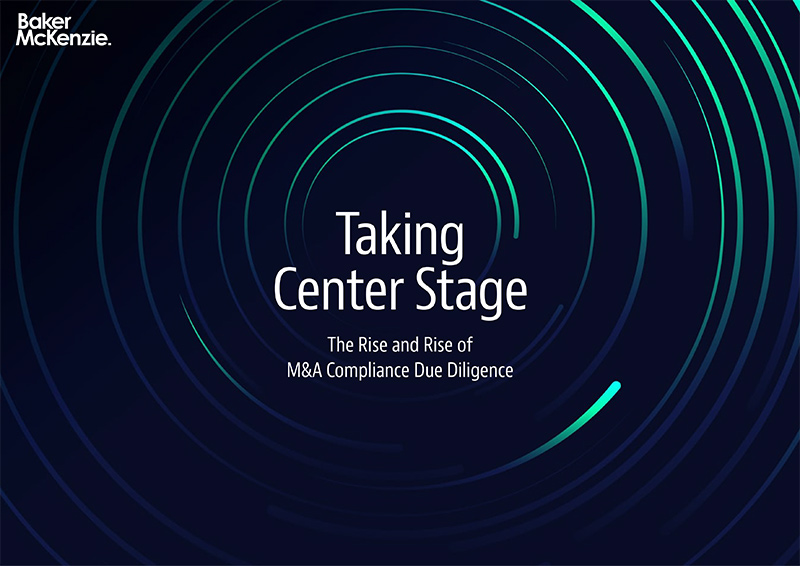Weak CDD leaves parties exposed to unnecessary and avoidable risks that could negatively impact pricing, profitability and even call into question the fundamental rationale of the deal.
Increasingly, dealmakers recognize that enforcement of anti-corruption efforts, such as the US Foreign Corrupt Practices Act (FCPA) and the UK Bribery Act, mean that consideration of compliance risks before the deal is done is an absolute must.
What is the accepted definition of CDD?
Fundamentally, it is the examination of both the regulatory obligations and risks facing an organization and, for most companies, this is likely to be a combination of antitrust, data privacy, cybersecurity, bribery and corruption.
For our new report, Taking Center Stage: The Rise and Rise of M&A Compliance Due Diligence, we interviewed more than 300 corporate leaders and legal advisers to assess the fundamental challenges and risks that regional and multinational organizations face in relation to CDD across both M&A and joint ventures.
Their insights have allowed us to draw out pivotal implications and transactional best practices to dealmaking in today’s ever changing, highly competitive and often volatile business climate.
CDD in the spotlight
Protecting value and avoiding liability is a key priority and CDD has now moved squarely into the spotlight in the transactional space. Smart buyers today know that compliance risks can and should be priced into transactions and the true value of an acquisition target can be ascertained only when compliance risks are assessed.
In fact, 26% of respondents say that more than half of their recent deals have failed or been abandoned due to discovery of compliance issues or risks over the past three years. An additional 41% say that more than a quarter of their deals faced similar fates.
Making Compliance a Priority
Without investing in CDD, many of the companies that took part in our study may have ended up in transactions that could have left them highly exposed, possibly destroying value in both the acquirer and acquired organizations.


